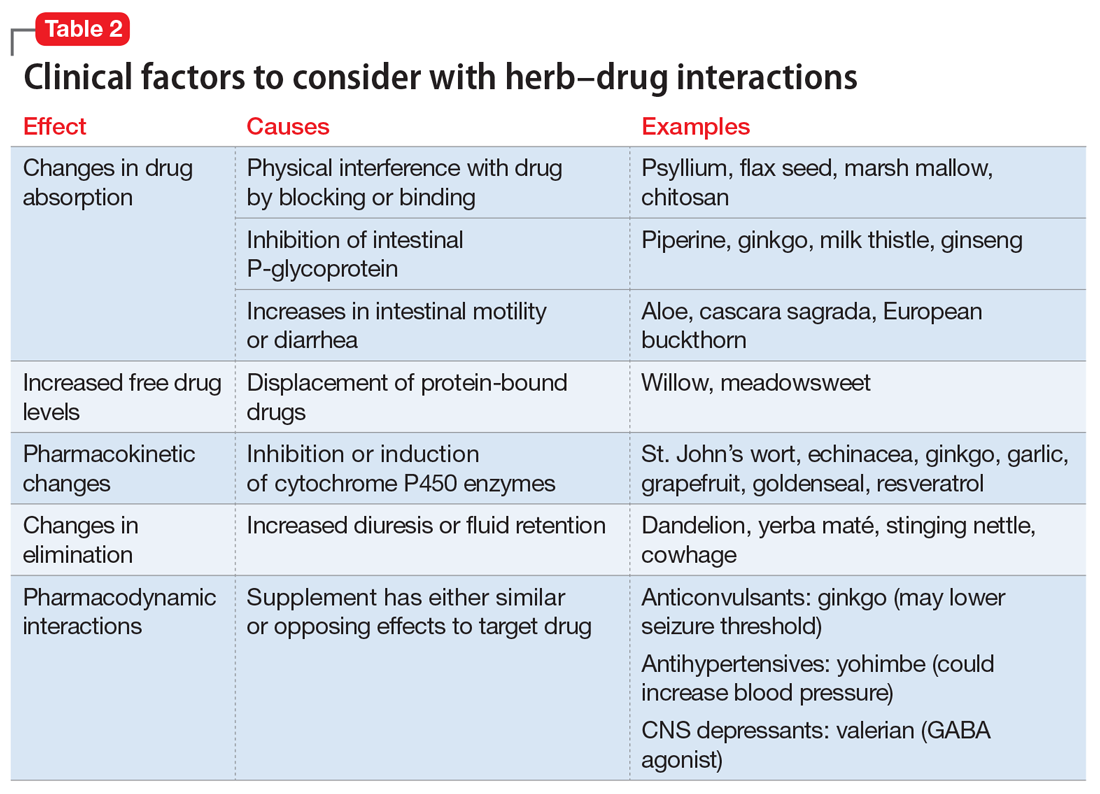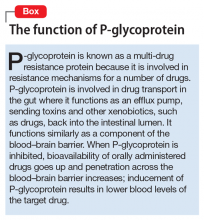Drug metabolism. Practitioners are increasingly aware that St. John’s wort can significantly affect concomitantly administered drug levels by induction of the CYP isoenzyme 3A4 and more resources are listing this same possible induction for garlic.1 However, what is less understood is the extent to which different preparations of the same plant possess different chemical profiles (Table 2).
Clinical studies with different garlic preparations—dried powder, aqueous extracts, deodorized preparations, oils—have demonstrated diverse and highly variable results in tests of effects on CYP isoenzymes and other metabolism activities.2 There also is contradictory evidence between in vitro and in vivo studies, with 1 in vitro study of garlic extract demonstrating marked CYP3A4 effects up to 30%, while another study using a water-soluble, aged garlic extract noted little or no effects.3
Other studies also have demonstrated opposite results.2 A clinical trial in healthy participants found no difference in the pharmacokinetic parameters of the CYP3A4 substrate drug midazolam before and after administration of a garlic oil supplement.4 However, inhibition of CYP2E1 was likely, demonstrated by a 22% increase in levels of the skeletal muscle relaxant chlorzoxazone.4 A study of garlic on ritonavir pharmacokinetics demonstrated large intra-subject variations, leading researchers to speculate that the garlic extract used could be both inducing and inhibiting CYP3A4, as well as having effects on drug absorption via P-glycoprotein (Box). This brings up another possible interaction because Ms. X substituted a different brand and form of garlic.5Drug absorption. Small differences in amounts of vitamins in the supplement are unlikely to be clinically significant, but the addition of piperine could be affecting quetiapine absorption. Piperine, a constituent of black pepper and long pepper, is used in Ayurvedic medicine for:
- pain
- influenza
- rheumatoid arthritis
- asthma
- loss of appetite
- stimulating peristalsis.6
Animal studies have demonstrated anti-inflammatory, anticonvulsant, anticarcinogenic, and antioxidant effects, as well as stimulation of digestion via digestive enzyme secretion and increased gastromotility.3,6
Because piperine is known to increase intestinal absorption by various mechanisms, it often is added to botanical medicines to increase bioavailability of active components. BioPerine is a 95% piperine extract marketed to be included in vitamin and herbal supplements for that purpose.3 This allows use of lower dosages to achieve outcomes, which, for expensive botanicals, could be a cost savings for the manufacturer. Studies examining piperine’s influence on drug absorption have demonstrated significant increases in carbamazepine, rifampin, phenytoin, nevirapine, and many other drugs.7,8 These increases are caused by several mechanisms, but the 2 most important may be inhibition of intestinal P-glycoprotein and increases in small intestine absorption surfaces (Table 2).6-9
In addition to increased absorption, piperine seems to be a non-specific general inhibitor of CYP isoenzymes; IV phenytoin levels also were higher among test participants.6,8 Piperine reduces intestinal glucuronidation via uridine 5’-diphospho-glucuronosyltransferase inhibition, and the small or moderate effects on lithium levels seem to be the result of diuretic activities.3,7
Patients often are motivated to control at least 1 aspect of their medical treatment, such as the supplements they choose to take. Being open to patient use of non-harmful or low-risk supplements, even when they are unlikely to have any medicinal benefit, helps preserve a relationship in which patients are more likely to consider your recommendation to avoid a harmful or high-risk supplement.
Related Resources



